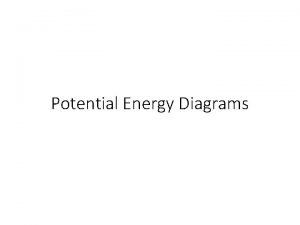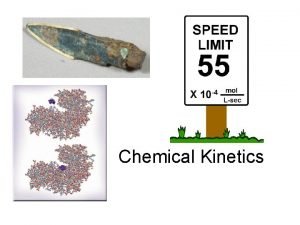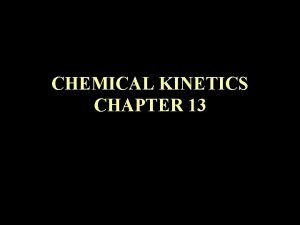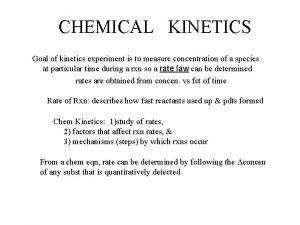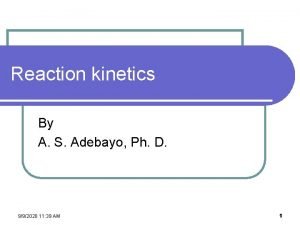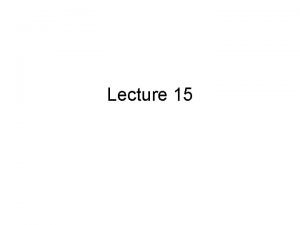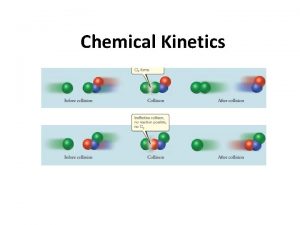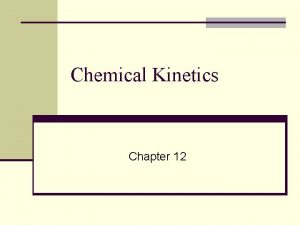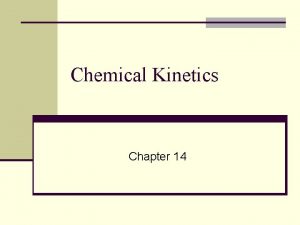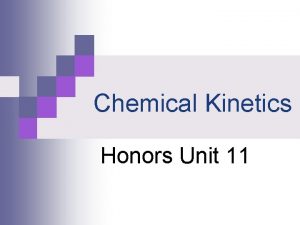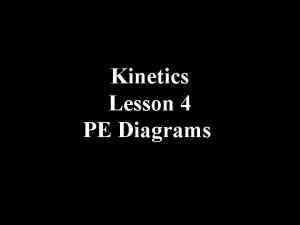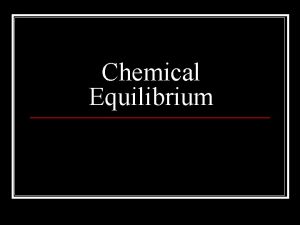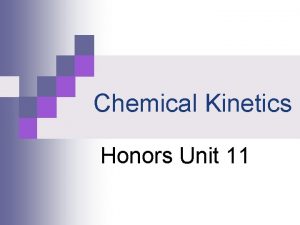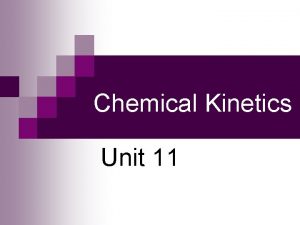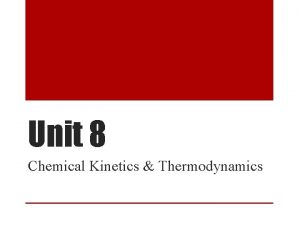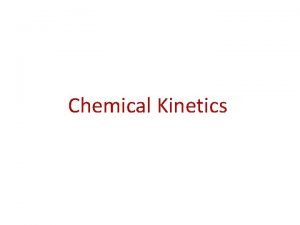Potential Energy Diagrams Chemical Kinetics Mrs Kay Review












- Slides: 12

Potential Energy Diagrams Chemical Kinetics Mrs. Kay

Review of Exothermic ► Reactants Ep is higher than Products Ep. ► Now, we must consider the activation energy (the energy needed so that the reactants bonds will break and reform to make product)

Review of Endothermic ► Reactants Ep is lower than Products Ep. ► Need to add more energy to the system for the forward reaction to take place. ► Still need to consider activation energy

Activated Complex ► Is the short-lived, unstable structure formed during a successful collision between reactant particles. ► Old bonds of the reactants are in the process of breaking, and new products are forming ► Ea is the minimum energy required for the activation complex to form and for a successful reaction to occur.


Fast and slow reactions ► The smaller the activation energy, the faster the reaction will occur regardless if exothermic or endothermic. ► If there is a large activation energy needed, that means that more energy (and therefore, time) is being used up for the successful collisions to take place.

Sample Problem ► The following reaction has an activation energy of 120 k. J and a ΔH of 113 k. J. 2 NO 2 2 NO + O 2 § Draw and label a potential energy (activation energy) diagram for this forward reaction. § Calculate the activation energy for the reverse reaction (if the reaction went backwards)

Another Problem ► The following hypothetical reaction has an activation energy of 70 k. J and a ΔH of 130 k. J A+B C+D § Draw and label a potential energy diagram for the reaction § Calculate the activation energy for the reverse reaction.

Watch the following Flash ► Review of what is occuring during a chemical reaction for both endothermic and exothermic. ► KNOW THIS!! ► http: //mhhe. com/physsci/chemistry/essenti alchemistry/flash/activa 2. swf

Practice: 1. The following hypothetical reaction has an Ea of 120 k. J and a ΔH of 80 k. J 2 a + B 2 C + D § Draw and label a potential energy diagram for this reaction. § What type of reaction is this? § Calculate the activation energy for the reverse reaction. § Calculate the ΔH for the reverse reaction.

2. Analyze the activation energy diagram below. ► What is the Ea for the forward reaction? For the reverse reaction? What is the ΔH for the forward reaction? For the reverse reaction? What is the energy of the activated complex? ► ►

Answer to #2 ► The activation energy (Ea) for the forward reaction is shown by (a): Ea (forward) = H (activated complex) - H (reactants) = 400 - 100 = 300 k. J mol-1 The activation energy (Ea) for the reverse reaction is shown by (b): Ea (reverse) = H (activated complex) - H (products) = 400 - 300 = 100 k. J mol-1 The enthalpy change for the reaction is shown by (c): H = H (products) - H (reactants) = 300 - 100 = +200 k. J mol-1 for the forward and reverse reaction.
 Energy example
Energy example Pe diagram
Pe diagram Electric potential and potential energy
Electric potential and potential energy Electric field lines
Electric field lines Pe=qed
Pe=qed Molekülerite nedir
Molekülerite nedir Chemistry unit 4 grade 11
Chemistry unit 4 grade 11 Order kinetics
Order kinetics Chemical kinetics definition
Chemical kinetics definition Chemical kinetics experiment
Chemical kinetics experiment Applications of chemical kinetics
Applications of chemical kinetics Pre equilibrium approximation
Pre equilibrium approximation Work and energy section 2 describing energy
Work and energy section 2 describing energy

